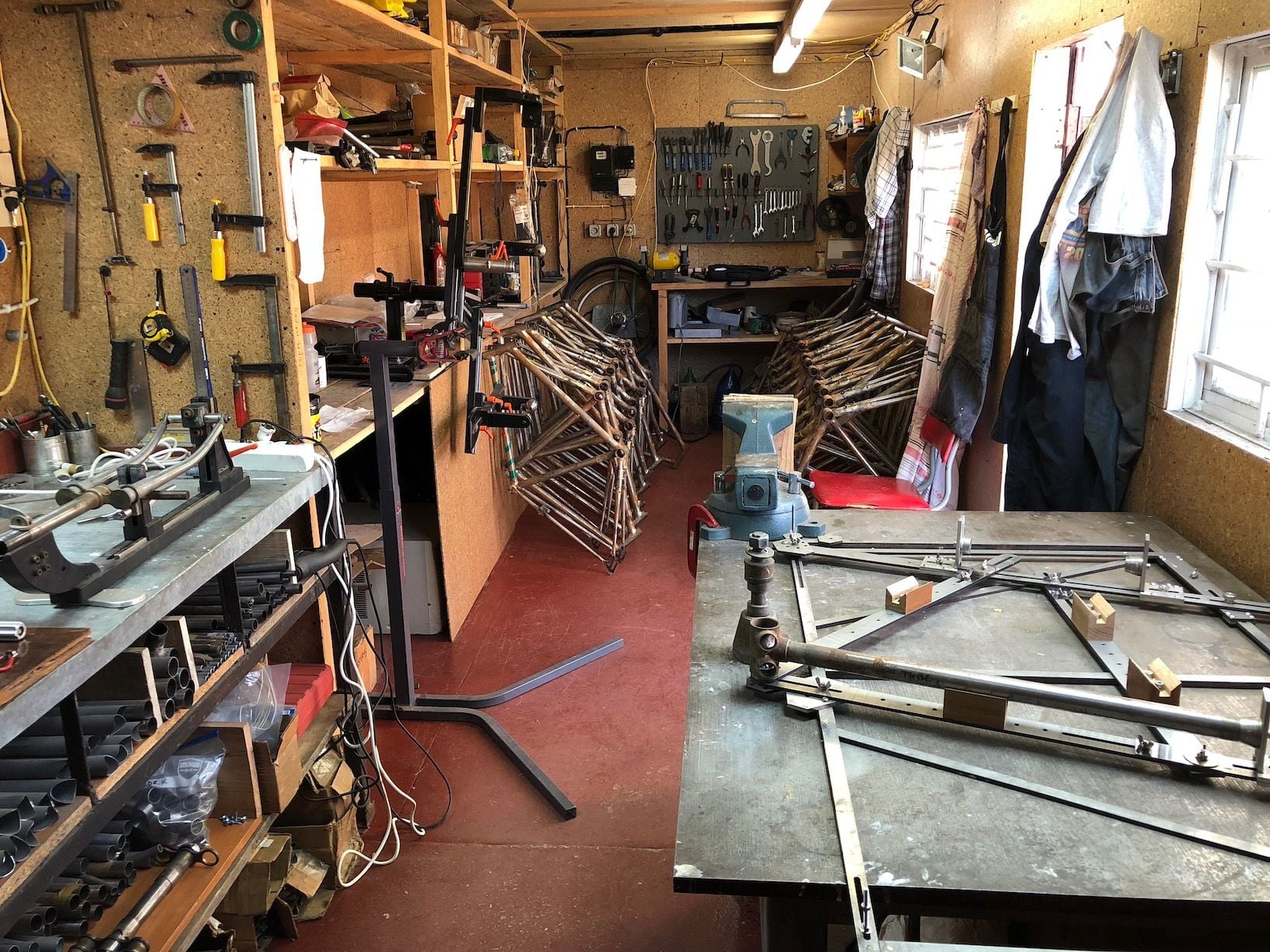Originally Posted by
bark_eater
I'm also wondering if its possible to fillet braze a frame without a full jig. I've been looking at the Jack Taylor Rough Stuff bikes, and I'm not sure I can get there with lugs.
Yes if youíre willing to use a lugged bottom bracket shell. It gets really difficult to get a rear wheel to center if you are hand mitering the end of the chainstays and fillet brazing a plain shell with vertical dropouts.
When I was learning to build frames in England in the 70ís, I took a day to visit the Taylor brothers further up north. Norm the framebuilder showed me how they built frames. He had a well-worn piece of plywood that served as his layout fixture. Many of the British learned the trade when they were young and trained their bodies to be like machines using just basic tools. Working class people didnít make/have much money after WWII and there wasnít a lot of profit in bicycles to buy fancy equipment. I admire what they did with what they had but their methods are not a model I would recommend. Furthermore, few young Americans today have a background in working with their hands that would make them great candidates to do things the way the classic era builders did. Young Americans do better using more specialized equipment.
We also have a small frame shop in Ukraine where we make fillet brazed transportation style of frames. It can be an example of organizing equipment in a small space. The foundation and most important tool is the alignment table. Because of translation issues it was made a bit bigger than I would prefer. It does make a solid foundation for a 2nd vise. The fixture we use to spot the front triangle together (which can also be used to design frames) was laser cut and etched out of 5mm thick stainless steel plate. Itís awesome. This type of fixture was used throughout the UK by builders in the classic era. Over the years Iíve added many bells and whistles to its basic design. Because it lays on the alignment table I can tune the cones that hold the tubes so they are exactly in plane. It can also be used to check the accuracy of a miter better than any other way.
A few years ago I brought over an Anvil fixture. It primary use is to speed up making the rear triangle. Iím glad it is there but it is a luxury and totally unnecessary for those on a budget. It does not help make a frame more accurately. I can do as well or better on the back end with true builderís wheel and a T tool and straight edge. In my priority system I would want a vertical mill and small lathe more than that fixture. I am always using them in my MIchigan shop. I love the precise way I can miter on the mill but I use them (I have 2) all the time for making other things. The tool I miss the most in the Ukraine shop is a 42Ē X 1Ē belt sander. For some reason they donít have them over there. While I wish I had a milling machine in Ukraine it is not necessary and a lathe would be totally unnecessary.

